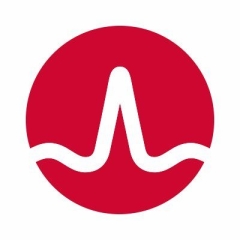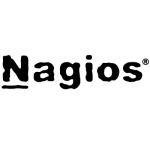What is most valuable?
It has many great features, but in most of the companies that I have done consulting for, they rarely use them as it requires an advanced level of knowledge of the tool.
Event Configuration: A tool in its simplest form creates business logic around events. For example, generate an alarm if Event A occurs and if Event B doesn’t occur within 30 seconds. In its hardest form, you can create a custom state machine for very hard business logic.
Event Correlation: Spectrum has out-of-the-box correlation, but with this tool, you can create custom ones. You can make some alarms hide inside another alarm as a symptom, get root cause analysis, and avoid unnecessary notifications/alarms on the screen.
Topology view: The topology diagrams on CA Spectrum look very nice and they are very useful. We stopped using them because with more than10K devices, the administration was just too painful.
Dynamic models: Integration with the CA Spectrum is awesome. Sending traps with the third-party tools and using the SBG to receive them requires a learning curve. However, once you get it, it is very simple. Unlike another tool, you don’t need to know what the third-party tool is monitoring. In other words, if it sends some data, it will be dynamically created in CA Spectrum.
How has it helped my organization?
Reduces the false positives, by creating our own business logic with the Event Configuration.
Allows us to have a single console/notification point, with the alarms of all the tools that we use for monitoring.
What needs improvement?
It’s like having a Ferrari, without a professional driver. Most companies don’t use all the good features. The out-of-the-box features are just too poor: (Ping, CPU, Disk and Memory, Process, and File Systems). CA Spectrum is an infrastructure monitoring tool, that comes with a few easy to configure metrics, such as Ping, CPU, Disk & Memory, Process and File Systems. However, these metrics are really basic, actually we can do better with Nagios or any other open source tools in the market. In my experience, most big companies, that have CA Spectrum only use it for monitoring these basic metrics, i.e., where the real benefit is not there. If you only want it for this purpose, then there are better and cheaper options available.
It’s mostly for SNMP.
It doesn’t give you performance metrics: You need CA eHealth for this.
Some of the benefits of this solution (also mentioned above) are:
Event Configuration: It can easily (for an expert) create any business logic such as it can alert first, if you receive 2 events from Type A. If you already alert this kind of alarm and it happens again, then do it only, once every hour.
Event Correlation and Root Cause Analysis.
Service configuration (model a service).
Southbound Gateway integration – It can integrate with any other solution and dynamically, create models on CA Spectrum.
Alarms (impact, root cause, symptoms, etc.)
Watches – It can create custom metrics, besides the basic ones that I have mentioned before.
InfoView – It can create custom reports.
Topology view – This one is really difficult and time consuming, but awesome, if you can do it right.
Most companies spend money on the license, but they don’t have a good administrator, to make use of all the good features. So they end up with a really expensive tool, that does only the basic things, which any tool in the market could do probably better. But, the good features of CA Spectrum, only a few monitoring tools can actually do.
For how long have I used the solution?
I have been using this solution since 2011. I got the CA Spectrum Professional Certificate in 2011.
What do I think about the stability of the solution?
It is very stable. It rarely fails and you can have a high availability implementation.
What do I think about the scalability of the solution?
Scalability and performance are great. We use both Nagios and CA Spectrum. We can say that Nagios needs around four times more servers than CA Spectrum needs.
How are customer service and technical support?
I can’t really tell in regards to the technical support. It depends on the guy that answers the phone (Latin America). They have a really excellent technical guy who helped us a few times, but most of the times, the guy that answered the phone knew less than we did.
Which solution did I use previously and why did I switch?
It was the first solution that we used when I started working. Right now, we are trying Naemon (Nagios). Here is my comparison:
Raw monitoring:
Naemon has a lot more flexibility, i.e., you can script and monitor anything with it, giving you more options than CA Spectrum.
Performance:
CA Spectrum is a lot better. The way they have for consulting SNMP in bulk is great, thus reducing the load a lot. It has around four times more performance with CA Spectrum.
Administration:
CA Spectrum offers you templates, Discovery tools, menus, etc.
In Nagios, we had to develop our own administration tools in order to discover and maintain over 10K devices. This needs a high understanding of the solution.
Business logics:
Here, it is a big win for CA Spectrum. With the events, you can make any of them interact with each other, even with different devices. I can’t think of any business logic that I wouldn’t be able to implement. (I am not saying it is easy, but with a lot of thinking, most of them could be done).
In Nagios, each service runs as an individual check.
How was the initial setup?
The setup is complex for a big environment such as primary servers, slave servers, high availability, and fault tolerance.
If you have a small environment, it is very straightforward. You have the SpectroSERVER, OneClick, and database on the same server, although the recommendation is to split them.
However, the out-of-the box features are very poor for the price, since you are paying per device. You need to use the other features to make it worth it.
What's my experience with pricing, setup cost, and licensing?
It’s a great tool, but an expensive one. Learn how to use it properly.
What other advice do I have?
Try to learn, at least, the following:
Event Configuration
Device Certification
Watches
Alarm Notification Manager
Services
SLA
Disclosure: My company does not have a business relationship with this vendor other than being a customer.


















